Best Ways to Stay Ahead of Onboarding and Training
Written by Megan Hamilton • Reviewed by Marilee Brewer
October 14, 2022
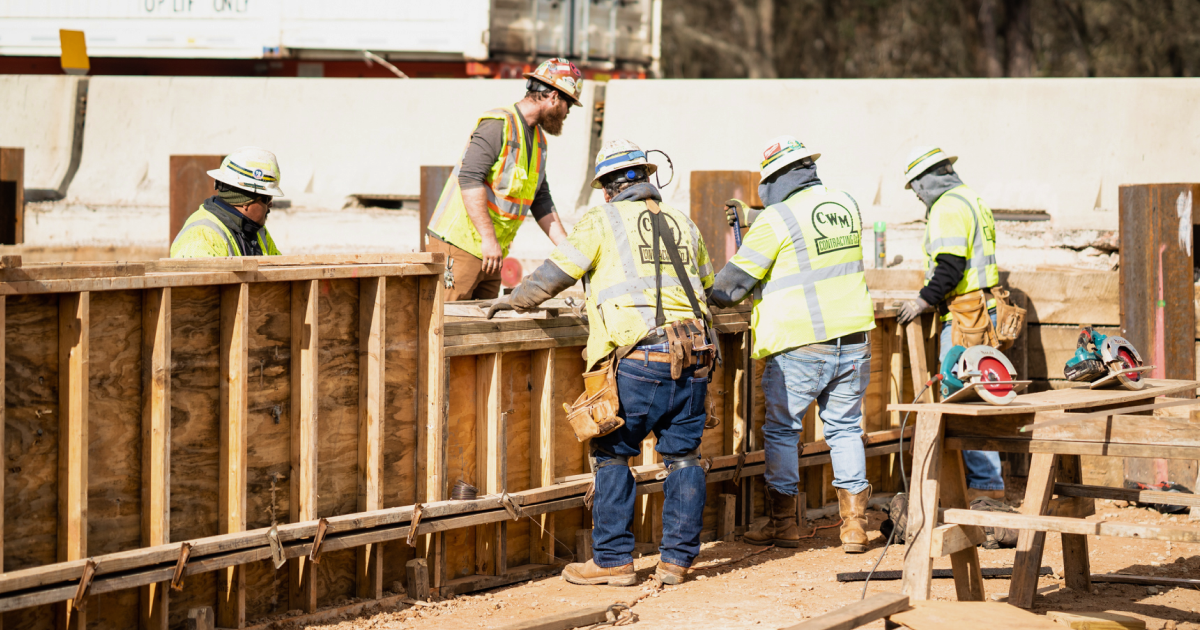
You’ve heard that you need to “stay ahead” of onboarding and training. But what does that mean, and how do you do it?
In a nutshell, staying ahead of onboarding and training means you’re proactive. You don’t scramble to put new hire training together last minute because you already have it. You prevent accidents on the jobsite, because you consistently train crew members to be safe and effective.
Staying ahead of onboarding and training is necessary for business growth. Let’s talk about why, and then we’ll share the best ways to do this in your company.
Why stay ahead of onboarding and training
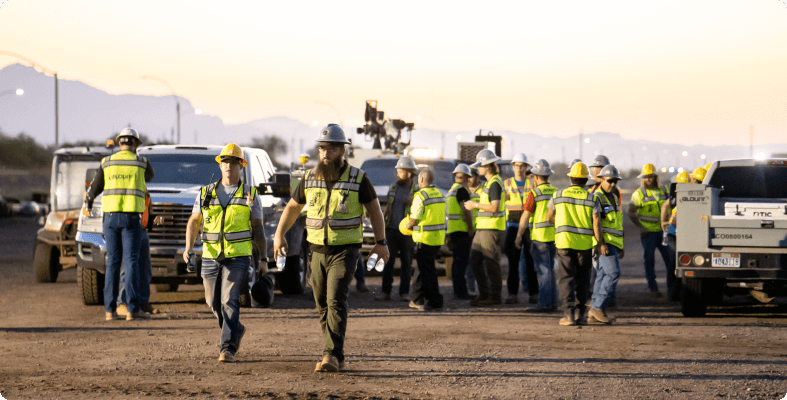
There are three big reasons to be proactive about training and onboarding:
- Effective onboarding gets new hires up to speed and productive faster.
- Onboarding reduces mistakes, accidents, injuries, rework, slowdowns, lost productivity, and other issues untrained new hires can unintentionally cause.
- Effective training reduces the number of training problems that can tank your business, giving you a better chance for growth and success.
Overall, you build a better brand and more successful business with proactive training and onboarding. Here’s how to make it happen.
Best ways to stay ahead of onboarding

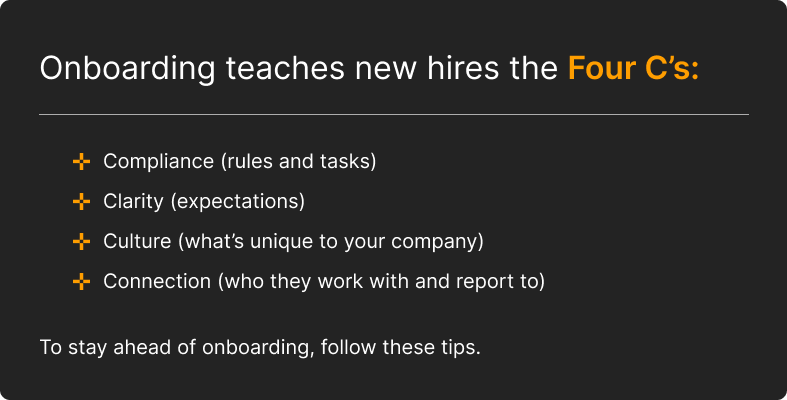
Market to today’s recruit
This may sound like a no-brainer, but before you can onboard, you need to recruit people. You may ask, “What about the workforce shortage?” It won’t stop you. You can attract great recruits by:
- Marketing your company to bring new workers to the industry
- Recruiting where they are (hint: they’re on social media)
- Getting people excited about the why behind what you do
Today’s workers want to join a mission that’s bigger than them, like “We give millions of people access to clean water.” Share stories about people who are already part of the mission, and you’ll recruit loyal new workers who help move the company forward.
Pre-board new hires
Pre-boarding prepares new hires for their first day of work ahead of time. Basically, you’ll give each new hire a personal welcome and make sure they’re well-informed so they can arrive on day one ready to learn.
Provide details about what they should do on their first day, such as where to go, when to be there, who they’ll meet, and what to bring. Take care of administration like payroll, tax forms, insurance enrollment, and logins for your training management system (TMS).
Set clear goals
Onboarding should give new hires a clear understanding of what you expect from them during their first 30, 60, and 90 days on the job.
For instance, laborers may have to shadow a more experienced worker for the first 10 days. They may have a 90-day evaluation to determine if they want to stay with the company or not.
All new hires must reach certain goals, but you should also set job-specific goals for each position on the crew, like pipelayers or grade checkers. Keep goals realistic and achievable. Remember, most newbies won’t produce like old pros within 90 days.
Provide safety, task-specific, and cultural training
New hires often make mistakes because they don’t know better.
To start them off on the right foot, provide basic safety training. Include task-specific onboarding, so they know how to do the work once they get to the jobsite. Then, they can start producing instead of standing around.
Finally, provide cultural onboarding. This training is unique to your company. It teaches your history, values, growth tracks, and anything else new hires need to know to succeed with you.
Integrate new hires quickly
Announce new hires to the team, and tell people who will work closely with them how they can help. For example, an experienced worker may volunteer as a mentor or let a new hire shadow them.
Be clear about how experienced crew members can build up new hires and how it will benefit their own career paths. And be clear about what’s not their job—they’re coworkers, not supervisors.
As soon as you safely can, bring new hires to the field to meet their crew. Give them time to bond and ask questions. Strong relationships are one of your biggest assets for onboarding new hires.
Best ways to stay ahead of training
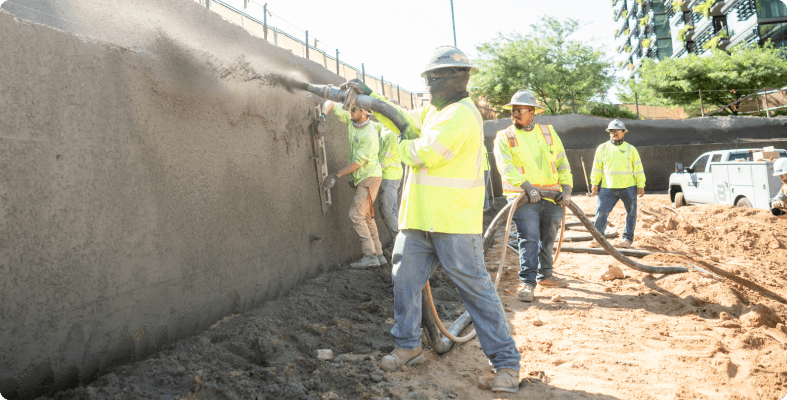
Every employee needs ongoing training—regardless of their role or experience level. A good training program helps your crew stay on their A-game (and stay safe on the job).
Here are some of the best ways to stay ahead of training your crew.
Choose a well-rounded training program
Training programs should cover four categories:
- Leadership training teaches soft skills like communication and time management.
- Task-specific training teaches crew members the skills to do their work, like how to operate an excavator or check grades.
- Safety training reduces the risk of accidents, injuries, slowdowns, and rework.
- Cultural training reminds employees how their work impacts the company's mission and keeps them motivated.
Crew members need all four types of training to thrive. A program like BuildWitt Training provides expert-led leadership, task-specific, and safety training courses to supplement your unique content.
Repeat training
Construction training is not “one and done.” Recurring training increases productivity, keeps people safer, and equips your crew to take on more responsibility. Believe it or not, that’s what they want. Responsibility is the second-most desired workplace reward after money.1
Besides, even the best workers need reminders. Provide recurring training such as annual safety courses, job-specific training to help people level up their careers, or refreshers on company culture and values.
Vary training methods
Training shouldn’t be boring. A great way to encourage worker engagement is to use multiple training methods. Some options include:
- E-learning
- Training apps
- Video lessons
- Quizzes and assessments
- Gamification (when you make learning a game)
- Micro-learning
- Job shadowing
Variety is the spice of life, but that said, spices aren’t a main course. Your training program needs some consistency, too. Perhaps everyone goes to the classroom for a one-hour training session on Mondays at 4 p.m.
Take it to the field
Some content is best suited for the classroom, some for the field. Consider when and where your crew will benefit most from a given lesson. With the right training software, you can make content available anywhere, anytime.
When you train in a classroom, think about how you’ll help the crew apply the lesson in the field. How long will they need supervision before you turn them loose? Will foremen give additional pointers during toolbox talks? Can crew members watch someone who’s already an expert demonstrate this skill onsite?
Offer clear growth tracks
Most people don’t want to wake up in five years and be where they are today. They want growth. Maybe they want to be the best pipelayer possible or become a supervisor.
Your job is to help them get there by defining success. What does it look like to be the best at what they do? How can they get a promotion? Employees often leave companies that don’t answer these questions, so providing clear growth tracks increases loyalty and retention.
Encourage people to take initiative, set their own goals, and work with leaders to reach them. Goals should be SMART (specific, measurable, attainable, relevant, timely).
Remember your front office staff
Often, construction and mining businesses focus on training field workers. That’s good—but don’t forget about the staff who keep things together in the office. They want responsibility and career growth, too. They want to know how to be the best at their jobs. So teach them.
Just as important, make it a point to bring these two groups together for all-hands training sessions and team-building events. Teach the front office and the field how to communicate effectively with each other, and productivity will skyrocket.
Ways to improve both onboarding and training
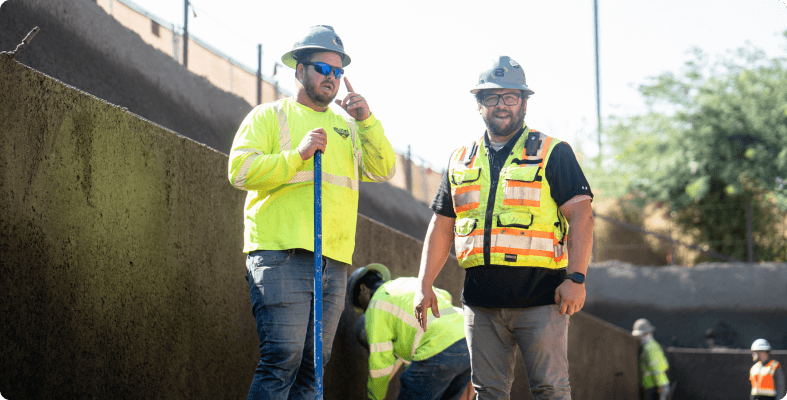
Onboarding and training are different, which is why we covered them separately at first. However, they do have a lot in common. Let’s look at some principles that apply to both onboarding and training.
Slow down to speed up
Dirt World companies often shoot themselves in the foot. They say, “We need people now! We don’t have time to train them. We can’t afford to train them.”
Then they send untrained workers into the field, where those workers make mistakes and get injured. Suddenly, production slows to a crawl (or stops entirely). Sales and business suffer, and the company pays more to fix the problem than they would have spent on training.
If you want workers to be highly productive, you must train them. Hit pause, give them the knowledge and resources they need, then put them to work. Yes, you may lose productivity for a few days. Yes, it may be a big upfront expense. But it will be worth it.
Running a business is a marathon, not a sprint. Running to win means you set your crew up to be productive long-term.
Get leadership to participate
Pulling off a new training program alone is like trying to roll a boulder uphill. But when your leadership team is supportive, change becomes much easier.
Talk to everyone from foremen to project managers to C-suite executives. You’ll need as many leaders as possible to buy into what you’re trying to do.
Be clear about why you want to implement changes and how these changes will move the company forward. Clarity and openness help win people over and prepare them to guide the crew through change.
Choose someone to be accountable
Who’s in charge of making sure your onboarding and training programs succeed?
At larger companies, safety or training managers typically do this. They and their team also handle administration and often content creation.
However, if you’re in a smaller company, consider who can be the admin for your training and onboarding programs, and who will take responsibility for the results.
Set clear training schedules
Unless you’re having an emergency safety stand down, training should never come as a surprise. Crew members should know when and where training sessions will occur, as well as any assignments they need to complete beforehand or anything they need to bring with them.
Most training software now has a communication feature that lets you share this information quickly and easily—so you don’t have to rely on word of mouth, group texts, or email.
Answer employee questions
In construction, leaders often berate workers for asking “stupid” questions. However, there’s a big difference between stupidity and ignorance. Stupidity is being unteachable; ignorance is being untaught.
You probably have workers who are untaught on some skills. But they want to learn. As the saying goes, “If you’re not asking questions, you’re not learning.”
Adopt Marcus Sheridan’s They Ask, You Answer principle. In other words, do your best to anticipate and answer common questions in training and onboarding. Teach leaders to welcome additional questions, and teach crew members who to ask for help when they need it. The more crews know, the more they can do.
Encourage engagement
Unengaging training wastes time and money, but you can encourage engagement when you:
- Plan ahead. Preparation helps trainers feel more confident, build interest in the topic, and deliver information effectively.
- Stay on task. Discussion is good, but if a conversation goes too deep or too off-topic, save it for a future training session.
- Manage time well. How long will each session, activity, or break last? Pro tip: multiple short sessions are more effective than one long one.
- Make it fun. Food, prizes,and camaraderie are great motivators. Whatever reasonable thing helps your crew enjoy training, do it.
- Act like you care. When you’re engaged, your crew will engage. No one wants a lecture from somebody who’s bored giving it!
Use a simple TMS
The TMS helps you administer and oversee training. Some TMS are way too complicated—and that’s not helpful for creating a training program your company can stick to. The simpler a TMS is to use, the better. A good TMS will:
- Be quick and easy to implement
- Have a user-friendly platform any administrator or crew member can get the hang of
- Make integrating your original content with premade training material quick and easy
One more thought: Choose a TMS from a company with a reputation for good customer service. That’s an even bigger time-saver!
Get feedback
Through surveys, new hire follow-ups, and one-on-one meetings with direct supervisors, ask team members what’s going well and what’s missing. What do they need? What do they want to learn? Listen to their feedback, and be willing to adapt so you can train them better and get them resources quickly.
Keep in mind, many workers have never had a leader ask for (or care about) their opinion before, so they may be hesitant at first. Once they know you’re serious and that they won’t be punished for speaking up, they’ll give you a goldmine of feedback.
Evaluate the results
If you spend time and money on training, you need to know whether or not it’s working. A good TMS helps you track your crew’s progress through training courses. It also helps you analyze results and see where people may need more education.
Regularly debrief results with your leadership team and training manager. Where are crew members doing well? Where are they struggling? What do you need to spend more time on? What should you change? How can you adapt?
Get training that’s made for the industry
Not every training program will give your crew what they need. The Dirt World is a very unique industry; many tasks and safety hazards there don’t come up in other jobs. So it’s vital to find a training program made for the industry.
With BuildWitt Training, you can access over 600 preloaded videos from industry experts on real, working jobsites. Plus, you can easily add your own content, so you can keep using all the great material that’s already working for you.
Learn how BuildWitt Training helps develop your crew and grow your business.














